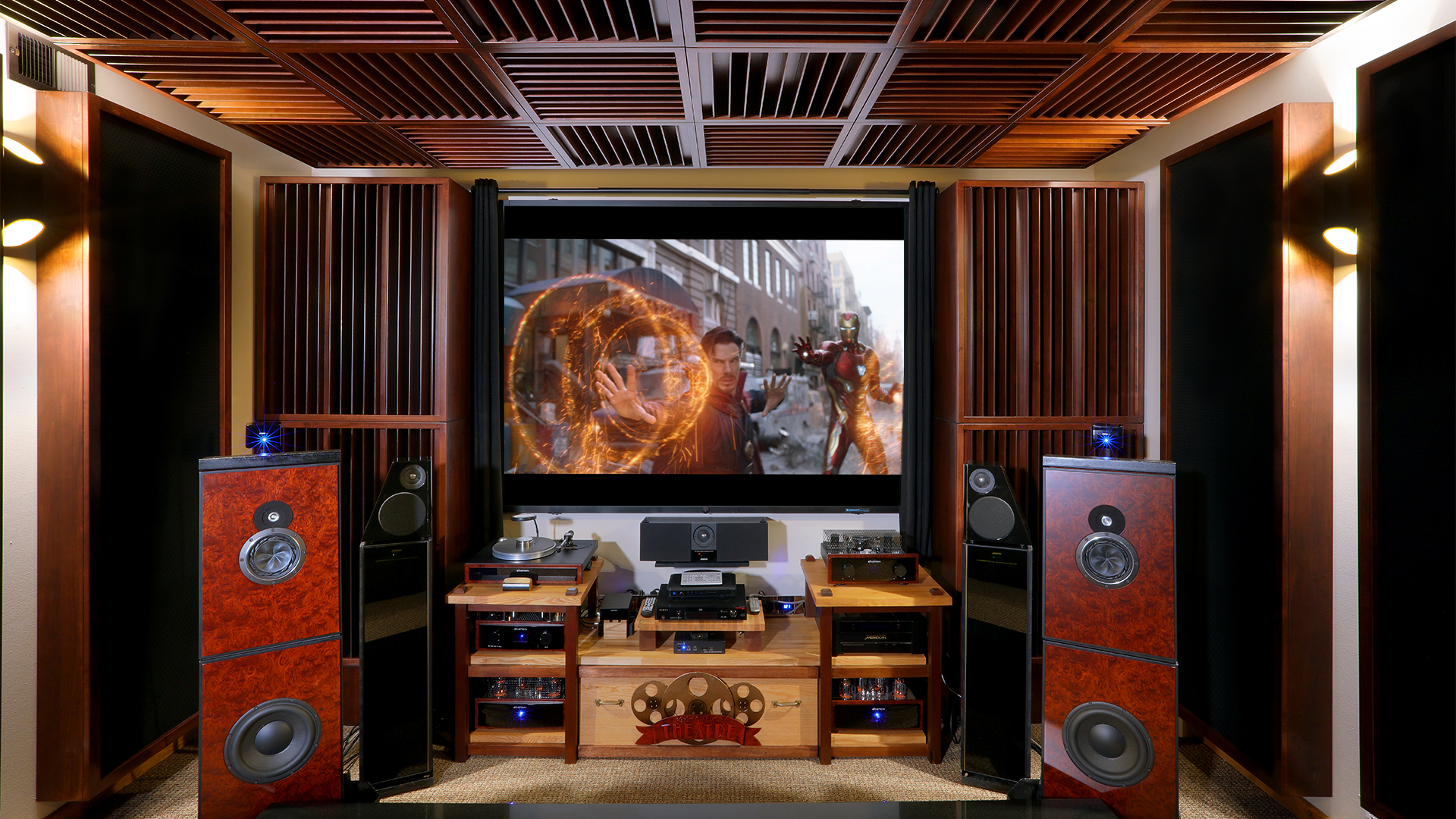Last week I was asked about the ideal set up for home theater diffuser panels on the back of my sound diffuser positioning video (which you can see below). Well the first thing we have to look at when it comes to a home theater room is sound fields. Tou have multiple modal sources of energy in a home theater room. You have some stereo sources also but, for argument sake, lets say we have multiple modal sources interjecting all this energy into the room.
We have seven channels, we have eight channels, nine, ten, eleven, twelve, sixty-two in Dolby Atmos, etc. So we have all these energy sources interjecting energy within the room and here’s the weird part about all these, they all want a certain amount of space in that room. They all need a certain amount of space in that room in order to complete their mission, which is what they were designed to do by the engineer. What are the front and rear channels designed to do? What are the left and the right?
Well that’s where we get a lot of our focus in image. The center channel is dialogue so that has a particular requirements, speech intelligibility. The left and the right channel have music and speech. So they have a particular requirement. The side channels, what are their requirements? Non-localization of source and wide disperse lateral domain. What do the rears have? Ambient noise levels, low dispersions.
I liked to break the home theater room down into three sections, front, middle and rear. The front is the center and the left and the right, the middle is the sides and the rear is the rear channels. Each one of those areas has a particular sound field requirement that you must achieve if you’re going to maximize the sound quality out of each one of those sources.
Sub-woofers
On top of that you have the low-frequency effect channel. You can have one sub-woofer, you can have two, you can have three, you can have four. The first issue, the three zones with sound fields that speak to higher energy, the low-frequency effects channel speaks to lower energy which is waves and I’ve done numerous videos and presentations on that (the following video is one such one).
So we have reflection management for the three zones of the room and then we have pressure management for the low-frequency effect channels in a home theater room. So keeping all that in mind, let’s look at the ceiling.
What is the ceiling?
Is it a horizontal, lateral domain at the listening position? No, it’s an overhead domain, and our ears are on the side of our head focused in the lateral dimension. So our sound field requirements for the ceiling are different than our sound field requirements for the front, middle and rear part of the rooms in the lateral, horizontal domain.
So we can bend the rules a little bit when it comes to diffusion in the ceiling because all we’re trying to do is minimize reflections and add a little spaciousness to our presentation. We’re really not trying to achieve a focus, concentrated sound field as much as we are trying to minimize reflections.
So diffusion and absorption is a great combination to do that. All diffusion will work too if you have the required amount of absorption in the rest of the domains. There again there’s no one correct answer here but we can bend the distance rules a little more with ceiling height because it’s a different domain.
So we have vertical, horizontal and then we have the height so that’s a different domain. Physics is a little bit different. Our perception at the listening chair because of the structure of our ears on the side of our head is different and those differences allow us to use diffusion and certain sequences in that position that we would not be able to use in the horizontal or lateral domains.
In Summary
I hope this discussion helped. If you would like me to analyse your home theater dimensions for free, please complete this simple form and I can compare it to our database of built and measured rooms www.acousticfields.com/free-acoustic-treatment-room-analysis-tell-us-about-your-room/.
Thanks
Dennis







